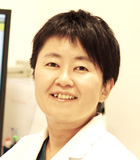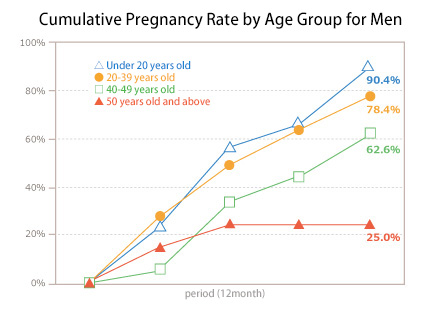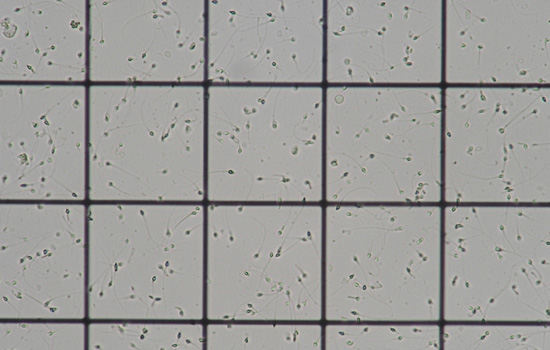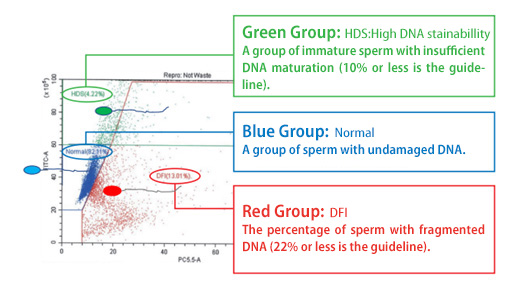
Last time, we heard from veteran embryologist Namiko Amano at Oak Sumiyoshi and Gynecology about the work of an embryologist.
This time, I would like to hear from Dr. Noriko Watanabe, a specialist in male infertility treatment and surgery, about male reproductive function and infertility testing.

Dr. Noriko Watanabe
Although the decline is slower compared to females, it begins around the age of 35, and the speed of aging accelerates around 40 and 50 years old.
Therefore, infertility is not only a problem for women, but I hope that infertility treatment can be started considering the husband's age as one of the factors.
Let's take a look at the actual percentage of pregnancies.
The graph below shows the cumulative pregnancy rate for men divided into four groups based on age over one year.

*「Mohamed A. et al,Fertli Steril 79;1520-1527,2003」data reference
If a man is under 20 years old ( ), there is a 90% chance that the partner will become pregnant within one year.
), there is a 90% chance that the partner will become pregnant within one year.
For men aged 20-39 ( ), the rate is 78%, for those aged 40-49 (
), the rate is 78%, for those aged 40-49 ( ), it is 62%, and for those 50 years old and above (
), it is 62%, and for those 50 years old and above ( ), it is 25%.
), it is 25%.
As the man's age increases, it becomes more difficult for the partner to conceive.
Of course, even if the man is older, there is still a possibility of the partner becoming pregnant, but the probability decreases as shown in the graph above.
It is recommended to perform a minimum of two semen analyses.
The World Health Organization (WHO) recommends three analyses.
The semen parameters can vary significantly depending on conditions leading up to ejaculation.
Therefore, it is recommended to conduct multiple tests.
In late September 2021, the WHO updated its criteria as follows:
| Parameter | Reference Value | |
|---|---|---|
| 5th Edition(2010) | 6th Edition(2021) | |
| Volume of semen | 1.5㏄ | 1.4㏄ |
| Sperm concentration | 15,000,000/ml | 16,000,000/ml |
| Total sperm count | 390,000,000 | 390,000,000 |
| Motility | 40% | 42% |
| Progressive motility | 32% | 30% |
| Viability | 58% | 54% |
| Normal morphology rate | 4% | 4% |
(data reference from WHO laboratory manual for the examination and processing of human semen, 6th ed)
Exceeding the WHO criteria does not necessarily indicate that there are no issues with fertility, nor does falling below the criteria mean that pregnancy is impossible.
Please consider it as a rough guideline.

In addition to semen analysis, the WHO now recommends a new test called DFI (DNA Fragmentation Index) testing.
This test measures the rate of sperm DNA fragmentation.
It is said to be beneficial not only for infertility but also for individuals experiencing recurrent miscarriages.

Example of DFI testing (quoted from Partners Corporation)
While the female partner undergoes hormone level tests and ultrasound examinations, the male partner will undergo multiple semen analyses and DFI+ORP (Oxidative Stress) tests.
If there are any abnormal results, further examination for varicocele will be conducted.
Based on the results, the decision to proceed with general infertility treatment, continue with the current treatment, or advance to assisted reproductive technology (ART) will be discussed.
At Oak Clinic, we collaborate with urologists to perform TESE on the same day as egg retrieval.
In the case of TESE, the number of sperm may be limited, and multiple TESE procedures may not be feasible.
Therefore, initially, we use unfrozen sperm collected on the day of TESE for intracytoplasmic sperm injection (ICSI) to utilize the retrieved sperm in the best possible condition.
Of course, the importance of either the eggs or the sperm may vary depending on the couple, so we schedule TESE and egg retrieval accordingly, considering the couple's situation.
At Oak Clinic, if no sperm is found, we continue searching for sperm until we have examined all the collected tissues.
If sperm is found immediately or if the necessary sperm for ICSI is secured, we freeze the remaining tissues at that point.
Some facilities may set a time limit, and if no sperm is found within that time, they may determine that "no sperm is present."
However, at Oakkai Clinic, if no sperm is found, we ensure that there is no possibility of saying, "There might be one sperm somewhere," or "There might have been sperm in that tissue we examined briefly." We examine all the tissues thoroughly.
|
Profile:Graduated from Yokohama City University Message from Dr. Iwamoto:I have already introduced myself on our website, but I would like to inform you that starting from April 1st, I will be in charge of the male infertility outpatient clinic. The one conducting direct consultations at the outpatient clinic is Dr. Kazumitsu Yamasaki, a male infertility specialist. |
|
Profile:Graduated from the Faculty of Medicine at the University of Tsukuba. Worked at Tsukuba Gakuen Hospital. Message from Dr. Yamasaki:Currently under preparation. |